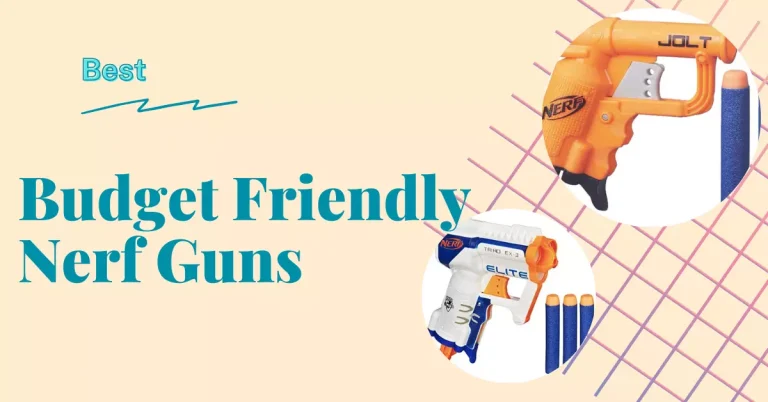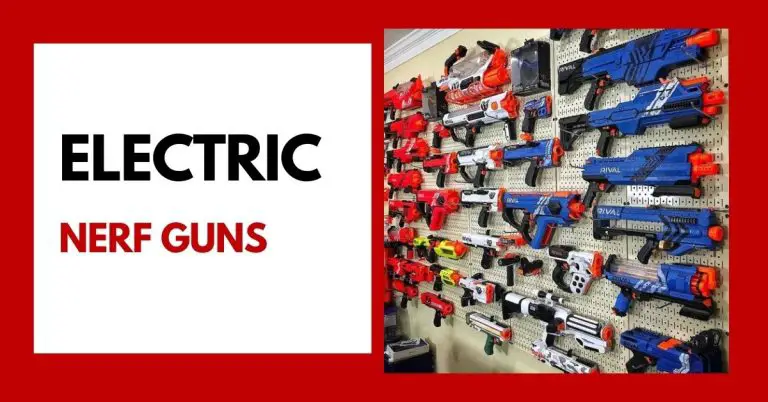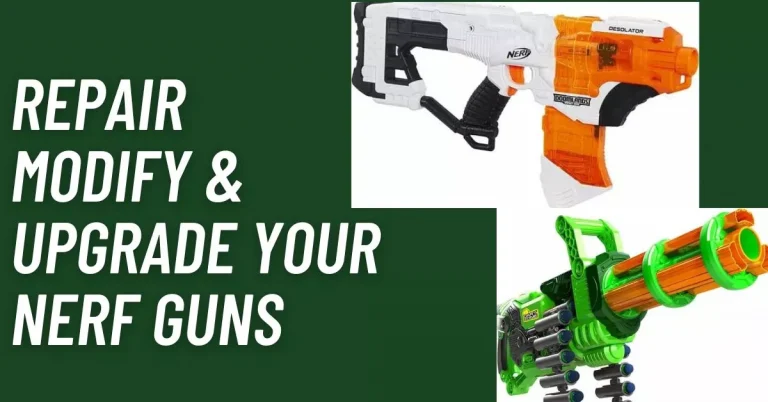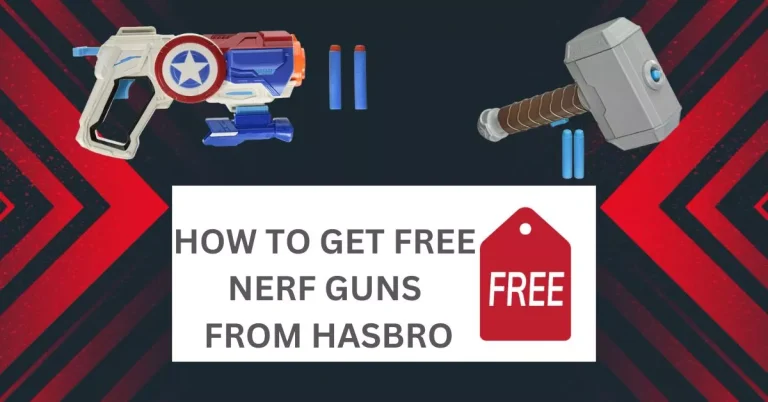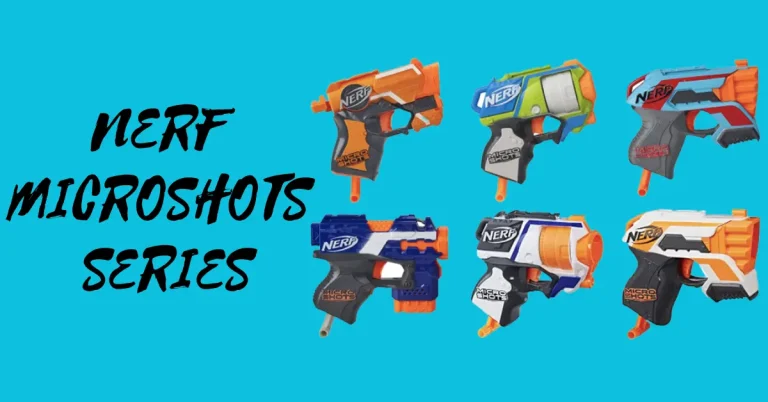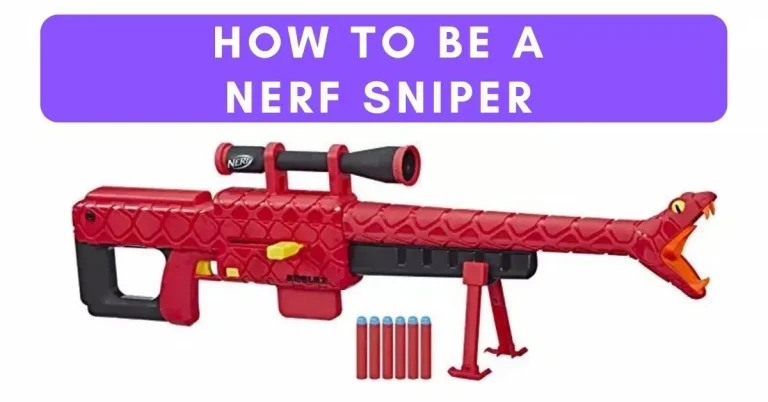Ultimate Guide to Nerf Blaster Maintenance and Troubleshooting
Nerf blasters are beloved toys that provide hours of entertainment for enthusiasts of all ages. Whether you’re a casual player who enjoys occasional backyard battles or a serious competitor participating in organized events, proper maintenance of your Nerf arsenal is essential for optimal performance and longevity.
Many Nerf enthusiasts invest significant time and money into building their collections, yet proper maintenance is often overlooked. A well-maintained blaster not only performs better but also lasts longer, saving you money in the long run.
This guide aims to provide you with the knowledge and techniques to keep your Nerf blasters firing accurately and reliably for years to come.
Why Proper Maintenance Matters
Before diving into specific maintenance procedures, it’s important to understand why regular upkeep of your Nerf blasters is crucial:
Performance Benefits
- Consistent Firing Power: Clean mechanisms ensure that springs, air restrictors, and plungers operate at their intended strength, maintaining consistent firing power.
- Improved Accuracy: Debris-free barrels allow darts to travel straighter with less interference, significantly improving accuracy.
- Reliable Operation: Regular maintenance reduces jamming and misfires, ensuring your blaster works when you need it most.
- Optimal Range: Clean blasters can achieve their maximum designed range, giving you a competitive edge.
Longevity Benefits
- Extended Lifespan: Regular cleaning prevents premature wear on moving parts, extending the overall lifespan of your blaster.
- Preserved Value: Well-maintained blasters retain their value better, which is particularly important for limited edition or discontinued models.
- Prevention of Permanent Damage: Addressing minor issues early prevents them from developing into major problems that could permanently damage your blaster.
- Protection of Modifications: For those with modified blasters, maintenance protects your investment of time and resources.
Essential Maintenance Tools and Supplies
Having the right tools on hand makes maintenance easier and more effective. Here’s what you should have in your Nerf maintenance kit:
Basic Cleaning Supplies
- Microfiber Cloths: For wiping down exterior surfaces without scratching.
- Cotton Swabs (Q-tips): Perfect for cleaning hard-to-reach areas.
- Pipe Cleaners: Ideal for cleaning barrels and narrow passages.
- Compressed Air: For blowing out dust and debris from internal mechanisms.
- Soft-Bristled Brushes: Various sizes for different cleaning tasks.
- Isopropyl Alcohol (70%): For removing stubborn grime (use sparingly).
- Mild Dish Soap: For general cleaning of plastic parts.
Tools for Disassembly and Reassembly
- Screwdriver Set: Most Nerf blasters use Phillips head screws of various sizes.
- Needle-Nose Pliers: For manipulating springs and small components.
- Tweezers: For handling tiny parts.
- Small Containers: To organize screws and small components during disassembly.
- Smartphone or Camera: For taking reference photos before and during disassembly.
Maintenance Supplies
- White Lithium Grease: For lubricating mechanical parts (springs, plungers, etc.).
- Silicone Spray: For lubricating o-rings and rubber seals.
- Replacement Springs: Common wear items that may need replacement.
- Replacement O-rings: For maintaining proper air seals.
- Electrical Contact Cleaner: For electronic blasters.
Routine Maintenance Schedule
Establishing a regular maintenance schedule helps ensure your blasters remain in optimal condition. Here’s a recommended timeline:
After Each Use
- Visual Inspection: Check for obvious damage or issues.
- Remove Jammed Darts: Clear any darts stuck in the barrel or feeding mechanism.
- Exterior Wipe Down: Remove dirt, dust, and fingerprints from the exterior.
- Proper Storage: Store in a cool, dry place away from direct sunlight.
Monthly Maintenance (for regularly used blasters)
- Deep Barrel Cleaning: Clean the barrel thoroughly to remove dart residue.
- Mechanism Check: Test all moving parts for smooth operation.
- Lubrication Check: Apply lubricant to moving parts if necessary.
- Dart Inspection: Discard damaged darts that could cause jams.
Quarterly Maintenance
- Partial Disassembly: Open the blaster to clean internal components.
- Spring Inspection: Check for weakening or damage.
- O-ring Inspection: Look for cracks or wear in air seals.
- Thorough Lubrication: Apply fresh lubricant to all appropriate components.
Annual Maintenance
- Complete Disassembly: Take apart the entire blaster for thorough cleaning.
- Component Replacement: Replace worn springs, o-rings, and other parts.
- Electrical System Check: For battery-powered blasters, clean contacts and check wiring.
- Reassembly and Testing: Carefully reassemble and test functionality.
Step-by-Step Cleaning Procedures
External Cleaning
- Remove Batteries and Ammunition: Always start by removing batteries (if applicable) and all darts.
- Surface Cleaning:
- Dampen a microfiber cloth with water (add a drop of mild dish soap for stubborn dirt).
- Wipe down all external surfaces, paying special attention to grip areas and crevices.
- For stubborn stains, use a cotton swab lightly dampened with isopropyl alcohol.
- Dry thoroughly with a clean microfiber cloth.
- Barrel Cleaning:
- Insert a pipe cleaner or barrel cleaning rod with a cloth attachment.
- Gently push through the barrel to remove dart residue and debris.
- For stubborn residue, lightly dampen the cleaning tool with isopropyl alcohol.
- Allow the barrel to dry completely before use.
- Tactical Rail Cleaning:
- Use a dry cotton swab to clean tactical rails.
- Ensure all dirt is removed to allow accessories to attach properly.
Internal Cleaning (Basic – No Disassembly)
- Jam Door Access:
- Open the jam door (if your blaster has one).
- Use compressed air to blow out visible debris.
- Use a cotton swab to clean accessible areas.
- Magazine Well Cleaning:
- Remove the magazine or drum.
- Use compressed air to blow out debris.
- Wipe down accessible surfaces with a microfiber cloth.
- Trigger Mechanism Cleaning:
- Pull the trigger repeatedly while blowing compressed air into the trigger area.
- This helps dislodge debris that may be affecting trigger response.
Internal Cleaning (Advanced – With Disassembly)
Important Note: Before attempting disassembly, research your specific blaster model. Some blasters have tension springs that can cause injury if released improperly. Always work on a clean, well-lit surface and keep track of all components.
- Preparation:
- Take reference photos of the assembled blaster from multiple angles.
- Prepare containers for organizing screws and small parts.
- Review online guides specific to your blaster model if available.
- Disassembly:
- Remove all screws and carefully separate the shell halves.
- Take photos at each stage of disassembly for reference during reassembly.
- Remove internal components carefully, noting their orientation.
- Component Cleaning:
- Clean plastic parts with a damp cloth and mild soap if necessary.
- Use cotton swabs and isopropyl alcohol for stubborn grime.
- Clean springs with a dry cloth to remove dirt and old lubricant.
- Inspect o-rings for damage and clean gently with a dry cloth.
- Drying and Lubrication:
- Allow all components to dry completely before applying lubricant.
- Apply white lithium grease sparingly to metal-on-metal contact points.
- Use silicone spray for o-rings and rubber seals.
- Avoid over-lubrication, which can attract dirt and affect performance.
- Reassembly:
- Follow your reference photos to reassemble in reverse order.
- Ensure all components are properly aligned before tightening screws.
- Test functionality after reassembly before full use.
Special Maintenance for Different Blaster Types
Spring-Powered Blasters
Spring-powered blasters are the most common type and rely on mechanical springs for firing power.
Key Maintenance Areas:
- Main Spring: Check for weakening or deformation.
- Plunger Tube: Ensure it’s clean and free of cracks.
- O-rings: Inspect for wear and proper sealing.
- Catch Mechanism: Clean and lubricate for reliable priming and firing.
Special Considerations:
- Avoid dry-firing (firing without a dart), which can damage the plunger.
- Replace main springs that show signs of weakening.
- Check for air leaks around the plunger o-ring.
Flywheel Blasters
Flywheel blasters use motorized wheels to propel darts and require different maintenance approaches.
Key Maintenance Areas:
- Flywheels: Clean dart residue from the wheels.
- Motors: Keep free of debris and check for unusual noises.
- Battery Contacts: Clean to ensure good electrical connection.
- Wiring: Inspect for damage or loose connections.
Special Considerations:
- Never lubricate flywheels, as this can reduce grip on darts.
- Clean battery compartments regularly to prevent corrosion.
- Remove batteries during long-term storage.
- Consider upgrading to rechargeable batteries for better performance.
Air-Powered Blasters
Air-powered blasters use compressed air for firing and have unique maintenance needs.
Key Maintenance Areas:
- Air Tank: Check for leaks and proper pressurization.
- Pump Mechanism: Ensure smooth operation.
- Valves: Inspect for proper sealing.
- O-rings: Check all seals for air leaks.
Special Considerations:
- Listen for air leaks when the tank is pressurized.
- Replace damaged o-rings immediately to maintain performance.
- Avoid over-pumping beyond the blaster’s designed capacity.
Common Issues and Troubleshooting
Even with regular maintenance, issues can arise. Here’s how to diagnose and fix common problems:
Reduced Firing Power
Possible Causes:
- Weakened main spring
- Air leaks in the plunger system
- Partial obstruction in the barrel
- Battery issues (for electronic blasters)
Solutions:
- Spring Issues: Replace the main spring if it shows signs of weakening.
- Air Leaks: Check and replace damaged o-rings and seals.
- Barrel Obstructions: Clean the barrel thoroughly.
- Battery Problems: Replace batteries or clean battery contacts.
Jamming Issues
Possible Causes:
- Damaged or low-quality darts
- Misaligned internal components
- Debris in the feeding mechanism
- Improper loading technique
Solutions:
- Dart Quality: Use only undamaged, high-quality darts.
- Component Alignment: Disassemble and check for misaligned parts.
- Feeding Mechanism: Clean thoroughly and check for obstructions.
- Loading Technique: Ensure darts are loaded correctly and magazines are fully seated.
Trigger Problems
Possible Causes:
- Dirt or debris in the trigger mechanism
- Damaged or misaligned catch spring
- Worn trigger components
- Improper reassembly after maintenance
Solutions:
- Cleaning: Thoroughly clean the trigger assembly.
- Spring Replacement: Replace damaged catch or trigger return springs.
- Component Inspection: Check for worn or damaged trigger components.
- Reassembly Check: Verify proper assembly of the trigger mechanism.
Inconsistent Accuracy
Possible Causes:
- Barrel obstructions or damage
- Worn or damaged darts
- Air seal issues
- Flywheel problems (for motorized blasters)
Solutions:
- Barrel Maintenance: Clean and inspect the barrel for damage.
- Dart Replacement: Use fresh, undamaged darts.
- Air Seal Check: Ensure all o-rings and seals are intact.
- Flywheel Cleaning: Remove dart residue from flywheels.
Dart Maintenance and Storage
The condition of your darts significantly affects blaster performance. Here’s how to maintain them:
Dart Inspection
- Regular Checks: Inspect darts for tears, compression, or deformation.
- Tip Integrity: Ensure the foam tip is securely attached to the body.
- Straightness Test: Roll darts on a flat surface to check for bending.
Dart Cleaning
- Gentle Washing: Clean dirty darts with mild soap and water.
- Drying: Allow darts to air dry completely before use.
- Reshaping: Gently reshape compressed darts by rolling between your fingers.
Dart Storage
- Container Storage: Store in a breathable container to prevent moisture buildup.
- Avoid Compression: Don’t store darts in loaded magazines for extended periods.
- Temperature Considerations: Keep darts away from extreme heat or cold.
- Rotation System: Use a first-in, first-out system to rotate your dart supply.
Seasonal Maintenance Considerations
Different seasons present unique challenges for Nerf blaster maintenance:
Summer Maintenance
- Heat Protection: Keep blasters out of direct sunlight and hot cars.
- Moisture Issues: After water battles or high humidity, dry blasters thoroughly.
- Outdoor Storage: Never leave blasters outside overnight.
Winter Maintenance
- Cold Weather Performance: Lubricants may thicken in cold weather, affecting performance.
- Indoor/Outdoor Transitions: Allow blasters to acclimate to indoor temperatures before use.
- Static Electricity: Winter’s dry air can increase static, attracting more dust to blasters.
Storage During Inactive Periods
- Long-Term Storage Preparation:
- Clean thoroughly before storage.
- Release tension on springs when possible.
- Remove batteries from electronic blasters.
- Store in a climate-controlled environment.
- Use silica gel packets to absorb moisture.
- Cover with a breathable cloth to prevent dust accumulation.
Advanced Maintenance Techniques
For enthusiasts looking to take their maintenance to the next level:
Performance Testing
- Chronograph Testing: Measure dart velocity before and after maintenance to quantify improvements.
- Accuracy Testing: Set up targets to test precision after maintenance.
- Consistency Checks: Fire multiple shots to verify consistent performance.
Preventative Upgrades
- Spring Replacements: Upgrade to higher-quality springs before originals fail.
- O-ring Improvements: Replace stock o-rings with higher-quality alternatives.
- Catch Mechanism Reinforcement: Strengthen catch plates in frequently used blasters.
Documentation System
- Maintenance Log: Keep records of when each blaster was serviced.
- Performance Tracking: Note changes in performance over time.
- Parts Inventory: Maintain a supply of common replacement parts.
Maintenance for Modified Blasters
Modified blasters require special maintenance considerations:
Higher Stress Components
- Upgraded Springs: More powerful springs put additional stress on other components.
- Shell Integrity: Check for stress cracks in the shell from increased internal pressure.
- Reinforced Parts: Inspect any reinforced or modified parts for wear.
Electronic Modifications
- Wiring Inspections: Regularly check soldered connections and wiring.
- Motor Maintenance: Listen for unusual noises and check for overheating.
- Battery Management: Ensure proper charging and storage of LiPo or other high-performance batteries.
Seal Improvements
- Improved Air Seals: Check modified air seal systems for leaks.
- Barrel Attachments: Ensure secure connections between added barrel extensions.
- Custom Parts: Inspect 3D-printed or custom-machined parts for wear or failure.
Creating a Maintenance Workspace
Setting up a dedicated maintenance area improves efficiency and organization:
Workspace Essentials
- Good Lighting: A bright work light or magnifying lamp.
- Clean Surface: A mat or towel to prevent losing small parts.
- Organization System: Small containers or a parts organizer.
- Reference Materials: Keep manuals or online guides accessible.
- Tool Storage: Keep tools organized and within reach.
Safety Considerations
- Eye Protection: Wear safety glasses when working with springs or pressurized components.
- Ventilation: Ensure good airflow when using cleaning solvents.
- Chemical Safety: Keep lubricants and cleaners properly labeled and stored.
- Work Area: Keep maintenance supplies away from children and pets.
Community Resources and Further Learning
The Nerf community offers valuable resources for maintenance knowledge:
Online Communities
- Reddit r/Nerf: Active community with maintenance tips and troubleshooting help.
- Nerf Haven Forums: Long-standing forum with extensive knowledge base.
- Facebook Groups: Specialized groups focused on specific blaster types or modifications.
Video Tutorials
- YouTube Channels: Many creators specialize in Nerf maintenance and modification.
- Manufacturer Resources: Official Hasbro videos and guides.
- Specialized Tutorials: Guides for specific blaster models or common issues.
Print Resources
- Unofficial Guides: Community-created maintenance manuals.
- Modification Books: Often contain valuable maintenance information.
- Technical Diagrams: Internal schematics of popular blasters.
Conclusion
Proper maintenance is the key to ensuring your Nerf blasters provide years of reliable performance. By establishing a regular maintenance routine, learning to troubleshoot common issues, and understanding the specific needs of different blaster types, you’ll maximize the lifespan and performance of your collection.
Remember that maintenance is not just about fixing problems—it’s about preventing them before they occur. A small investment of time in regular upkeep saves money and frustration in the long run, while also improving your competitive edge in Nerf battles.
Whether you’re a casual player or a serious enthusiast, the care you put into maintaining your blasters directly translates to better performance, more reliable operation, and ultimately, more fun during play. Start implementing these maintenance practices today, and you’ll quickly see the benefits in your Nerf arsenal.
Frequently Asked Questions
Q: How often should I clean my Nerf blasters? A: Blasters used regularly should receive basic external cleaning after each use, with more thorough internal cleaning monthly. Blasters used occasionally can be maintained less frequently, but should still be inspected regularly.
Q: Can I use WD-40 to lubricate my Nerf blaster? A: No, WD-40 is not recommended for Nerf blasters as it can damage plastic components and o-rings. Use white lithium grease for mechanical parts and silicone lubricant for o-rings and rubber seals.
Q: My blaster jams frequently despite cleaning. What could be wrong? A: Check your darts for damage, ensure proper loading technique, inspect the internal feeding mechanism for misalignment, and verify that all moving parts operate smoothly. If problems persist, a more thorough disassembly may be necessary.
Q: Is it normal for performance to decrease over time? A: Some performance decrease is normal as springs weaken and components wear. Regular maintenance can slow this process, and replacing worn parts can restore performance.
Q: Can I wash the foam darts? A: Yes, darts can be gently washed with mild soap and water. Allow them to air dry completely before use. Avoid using heat to speed drying as it can deform the foam.
Q: How do I know if I need to replace an o-ring? A: O-rings should be replaced if they show cracks, deformation, or no longer create a proper seal. Signs of a failing o-ring include reduced firing power and audible air leaks during operation.

I am a Nerf gun fan, researcher and modder. I post reviews about Nerf blasters and also share tips to solve issues with your toy guns.

